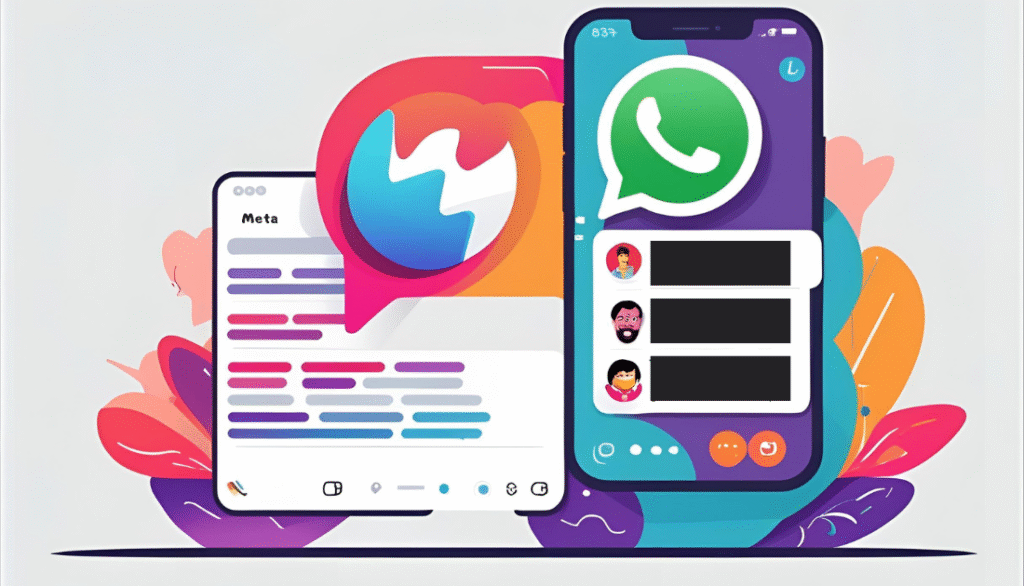Meta has announced the rollout of a new AI-powered feature for WhatsApp aimed at helping users catch up on unread messages more efficiently.
Highlights
- Feature Overview: Meta has launched AI-powered message summaries for WhatsApp, designed to condense unread chat threads into short, bullet-point overviews.
- User Control: The feature is opt-in by default. Users must manually enable it via Settings > Chats > Private Processing in WhatsApp.
- Privacy-First Design: Summaries are generated securely using Trusted Execution Environments (TEEs), ensuring end-to-end encryption and private cloud processing. Meta cannot see your message content.
- Visible Only to You: Summaries appear only to the requesting user. Other participants in the chat cannot see the generated summary.
- Advanced Privacy Settings: Users can block AI summaries on specific chats through Advanced Chat Privacy settings.
- Rollout Details: The feature is currently rolling out in the U.S. (English only), with plans for wider regional and language support later in 2025.
- Meta AI Expansion: This builds on Meta’s growing AI feature set in WhatsApp, following earlier AI chat tools launched in April 2025.
- Competitive Context: Meta’s integrated AI approach competes with third-party tools like ChatGPT and Perplexity, offering a more native WhatsApp experience.
The new tool, AI-generated message summaries, is designed to condense lengthy chat threads into short, digestible bullet points—helping users quickly review conversations they may have missed.
How the AI Chat Summaries Work
The feature leverages Meta AI to analyze chat content and generate concise summaries.
- Visible only to the requesting user, ensuring that no one else in the conversation sees the generated summary.
- Delivered in a bullet-point format, allowing for quick scanning of key information such as event plans, decisions, or major discussion points.
The feature is being gradually rolled out in the United States, with initial support for the English language. Meta has indicated that availability will expand to other regions and languages later this year.
Privacy Safeguards
Meta emphasized that the new feature has been built with privacy in mind, reinforcing WhatsApp’s end-to-end encryption standards.
The summaries are generated using Private Processing technology, which ensures that Meta and WhatsApp do not have access to the user’s message content.
- Summaries are processed in a secure cloud environment using Trusted Execution Environments (TEEs).
- Users can enable or disable the feature anytime through Settings > Chats > Private Processing within WhatsApp.
- Additional privacy options allow users to block AI features on a per-chat basis through Advanced Chat Privacy settings.
Meta has also stated that the underlying architecture is auditable by third-party security firms.
Feature Visibility and Activation
The AI summaries feature is opt-in by default. Users who wish to use it will need to manually enable it.
Chats that support AI summaries will display a small indicator icon, making it clear when the feature is available.
Expanding Meta AI’s Role in WhatsApp
The introduction of chat summaries builds on Meta’s earlier AI integrations launched in April 2025, which allowed users to engage with Meta AI inside chats. However, this earlier version did not have access to private conversations.
The new summaries and other AI tools, like writing suggestions, continue Meta’s strategy of embedding AI functionality directly within the WhatsApp experience, while leaving control over AI interactions in the hands of the user.
How Meta AI Compares
Meta’s expansion of AI in WhatsApp comes amid growing competition from third-party AI tools like ChatGPT and Perplexity, both of which are available through the WhatsApp Business Platform.
However, unlike these external chatbots, Meta AI is positioned as a built-in assistant, designed to integrate more seamlessly into day-to-day conversations with proactive features like summarization.
While the AI summaries feature is still in its early rollout phase, it reflects a broader trend in the messaging space: the increasing integration of context-aware, generative AI tools.


